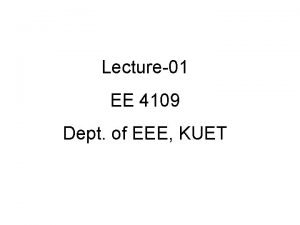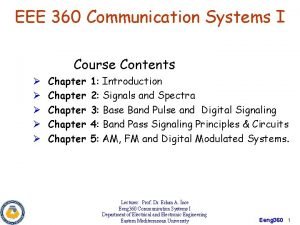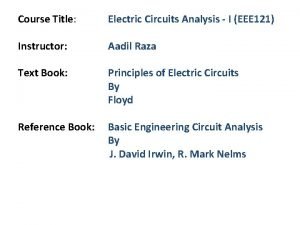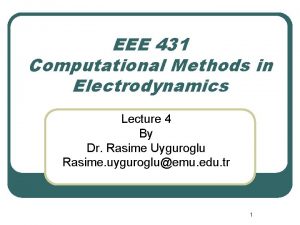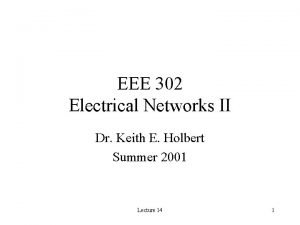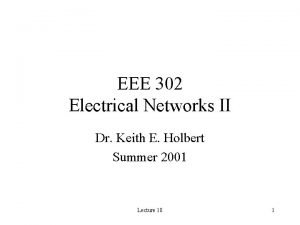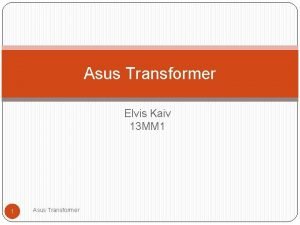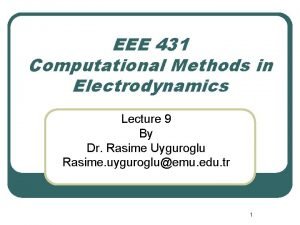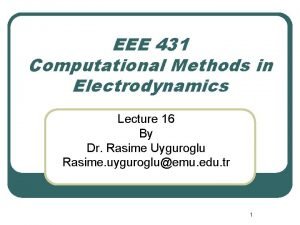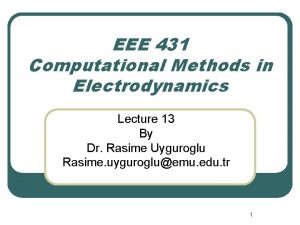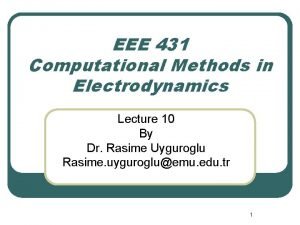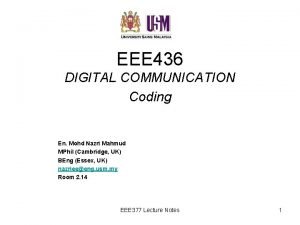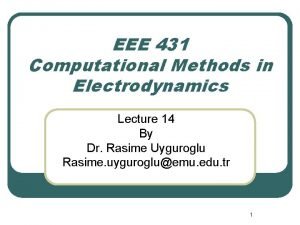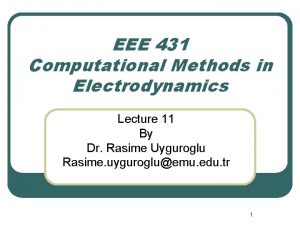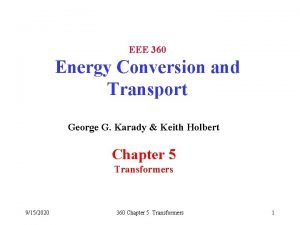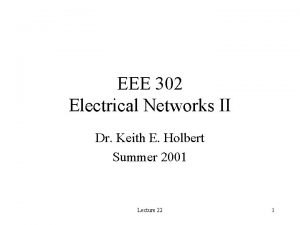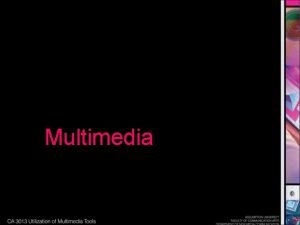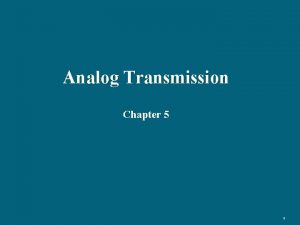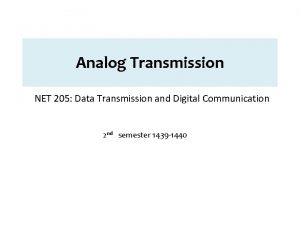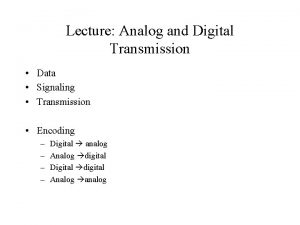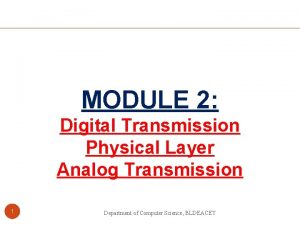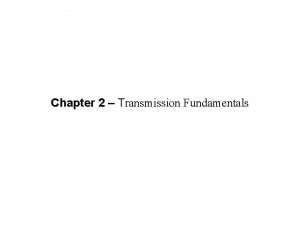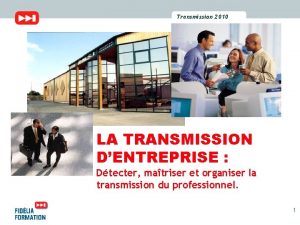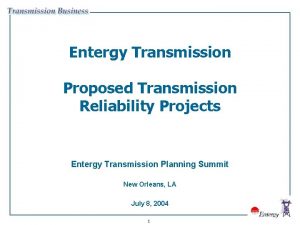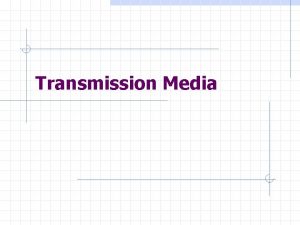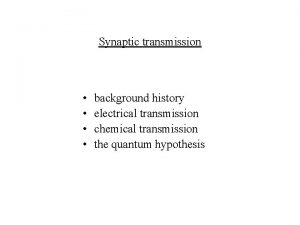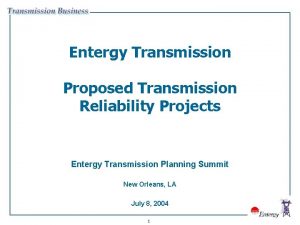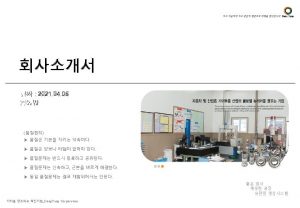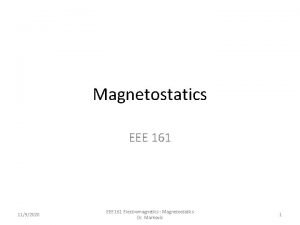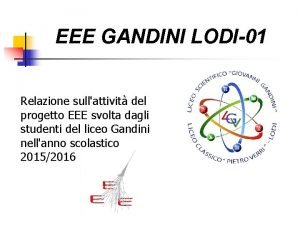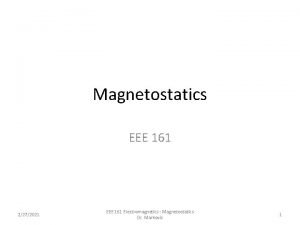Chapter 5 Analog Transmission Dept of EEE RUET




















- Slides: 20

Chapter 5 Analog Transmission Dept. of EEE, RUET A. B. M. Nasiruzzaman

5. 1 Modulation of Digital Data Digital-to-Analog Conversion Amplitude Shift Keying (ASK) Frequency Shift Keying (FSK) Phase Shift Keying (PSK) Quadrature Amplitude Modulation Bit/Baud Comparison Dept. of EEE, RUET A. B. M. Nasiruzzaman

Figure 5. 1 Digital-to-analog modulation Dept. of EEE, RUET A. B. M. Nasiruzzaman

Figure 5. 1 Digital-to-analog conversion Dept. of EEE, RUET A. B. M. Nasiruzzaman

Figure 5. 2 Types of digital-to-analog modulation Dept. of EEE, RUET A. B. M. Nasiruzzaman

Note: Bit rate is the number of bits per second. Baud rate is the number of signal units per second. Baud rate is less than or equal to the bit rate. Dept. of EEE, RUET A. B. M. Nasiruzzaman

Example 5. 1 An analog signal carries 4 bits per signal element. If 1000 signal elements are sent per second, find the bit rate. Solution In this case, r = 4, S = 1000, and N is unknown. We can find the value of N from Dept. of EEE, RUET A. B. M. Nasiruzzaman

Example 5. 2 An analog signal has a bit rate of 8000 bps and a baud rate of 1000 baud. How many data elements are carried by each signal element? How many signal elements do we need? Solution In this example, S = 1000, N = 8000, and r and L are unknown. We find first the value of r and then the value of L. Dept. of EEE, RUET A. B. M. Nasiruzzaman

Figure 5. 3 ASK Dept. of EEE, RUET A. B. M. Nasiruzzaman

Figure 5. 3 Binary amplitude shift keying (On-Off Keying) Dept. of EEE, RUET A. B. M. Nasiruzzaman

Figure 5. 4 Implementation of binary ASK Dept. of EEE, RUET A. B. M. Nasiruzzaman

Example 5. 3 We have an available bandwidth of 100 k. Hz which spans from 200 to 300 k. Hz. What are the carrier frequency and the bit rate if we modulated our data by using ASK with d = 1? Solution The middle of the bandwidth is located at 250 k. Hz. This means that our carrier frequency can be at fc = 250 k. Hz. We can use the formula for bandwidth to find the bit rate (with d = 1 and r = 1). Dept. of EEE, RUET A. B. M. Nasiruzzaman

Example 5. 4 In data communications, we normally use full-duplex links with communication in both directions. We need to divide the bandwidth into two with two carrier frequencies, as shown in Figure 5. 5. The figure shows the positions of two carrier frequencies and the bandwidths. The available bandwidth for each direction is now 50 k. Hz, which leaves us with a data rate of 25 kbps in each direction. Dept. of EEE, RUET A. B. M. Nasiruzzaman

Figure 5. 5 Bandwidth of full-duplex ASK used in Example 5. 4 Dept. of EEE, RUET A. B. M. Nasiruzzaman

Figure 5. 6 FSK Dept. of EEE, RUET A. B. M. Nasiruzzaman

Figure 5. 6 Binary frequency shift keying Dept. of EEE, RUET A. B. M. Nasiruzzaman

Example 5. 5 We have an available bandwidth of 100 k. Hz which spans from 200 to 300 k. Hz. What should be the carrier frequency and the bit rate if we modulated our data by using FSK with d = 1? Solution This problem is similar to Example 5. 3, but we are modulating by using FSK. The midpoint of the band is at 250 k. Hz. We choose 2Δf to be 50 k. Hz; this means Dept. of EEE, RUET A. B. M. Nasiruzzaman

Figure 5. 7 Implementation of BFSK Dept. of EEE, RUET A. B. M. Nasiruzzaman

Example 5. 6 We need to send data 3 bits at a time at a bit rate of 3 Mbps. The carrier frequency is 10 MHz. Calculate the number of levels (different frequencies), the baud rate, and the bandwidth. Solution We can have L = 2^3 = 8. The baud rate is S = 3 MHz/3 = 1000 Mbaud. This means that the carrier frequencies must be 1 MHz apart (2Δf = 1 MHz). The bandwidth is B = 8 × 1000 = 8000. Figure 5. 8 shows the allocation of frequencies and bandwidth. Dept. of EEE, RUET A. B. M. Nasiruzzaman

Figure 5. 8 Bandwidth of MFSK used in Example 5. 6 Dept. of EEE, RUET A. B. M. Nasiruzzaman

